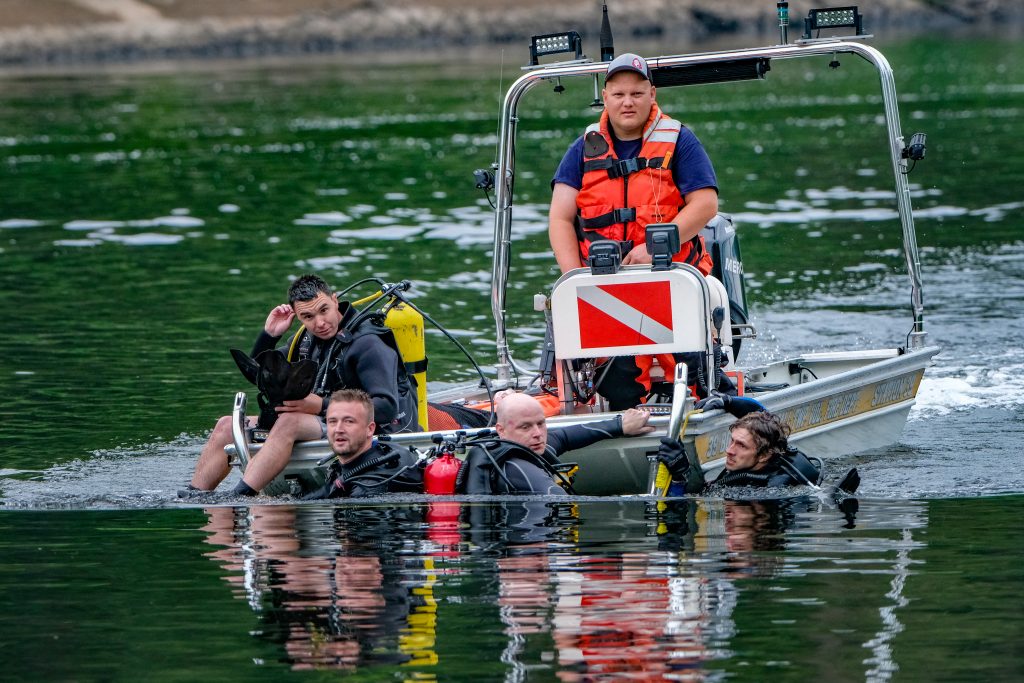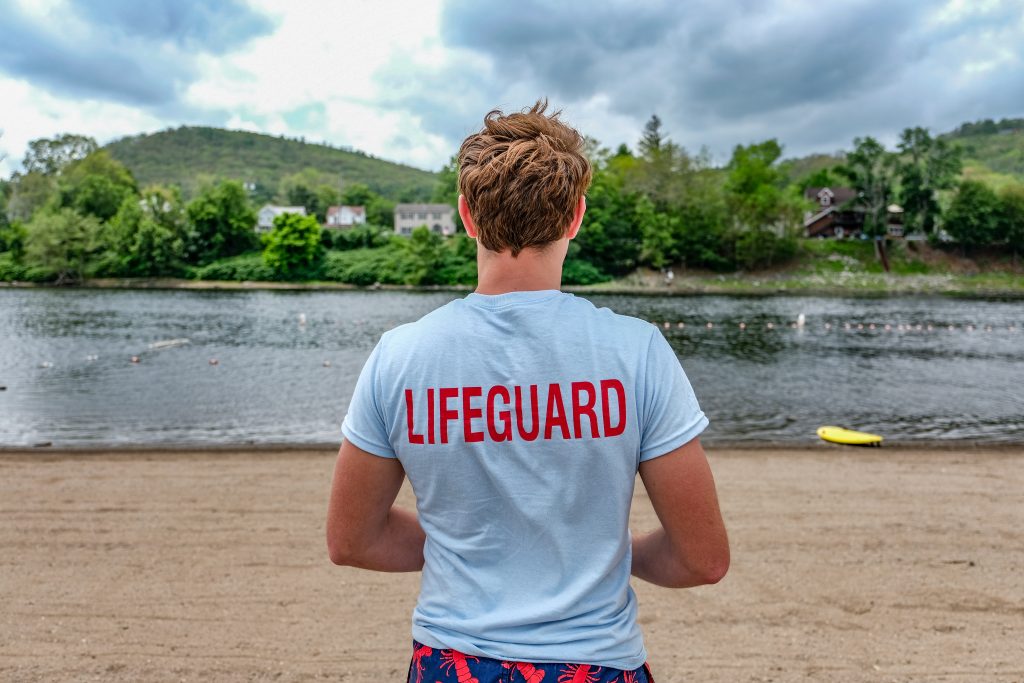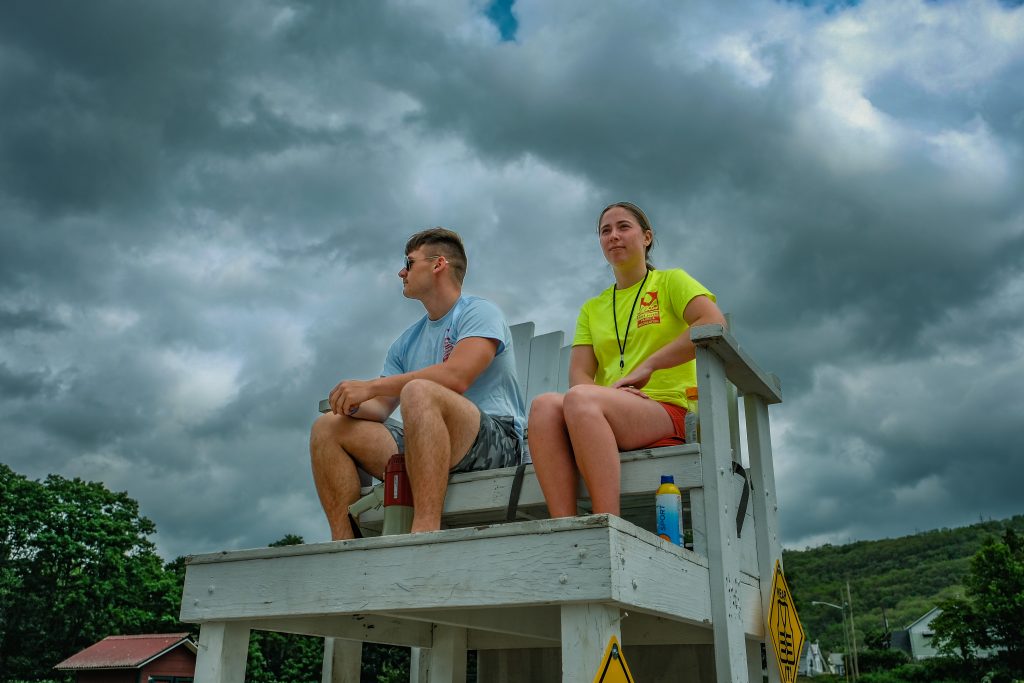
Drownings on the Delaware: What the National Park Service is doing to try to stop them
| July 29, 2024
Jeysson Ariel Osorio-Reyes had traveled last month to Milford Beach in Pike County, Pa., from Jackson Township, N.J., to cool off and enjoy the water.
It was warm and humid with the sun darting out from behind puffy clouds for most of that afternoon on June 29.
Osorio-Ryes, 24, was swimming in the Delaware River at approximately 3 p.m. when witnesses saw him submerge some 75 yards from the shore and fail to reappear.
A call went out to 911, and at 3:15 p.m. emergency services, including river rescue crews from several municipalities, responded.
Nearly four hours later, in what was going to be the final sweep of the evening before boats and crews were pulled out because of increasing darkness and a coming storm, Cory Homer, captain of the dive team at the Westfall Volunteer Fire Department, located Osorio-Ryes some 30 to 40 feet from the Pennsylvania shoreline in 10 feet of water.
Like every other person who has drowned on the river in the last several decades, he was not wearing a life jacket.

The river can be misleading on the surface
Just four hours before the emergency call went out, Homer had been discussing river safety, what he and his team noted about those who drown on the Delaware, and how such drownings could be avoided.
Homer, who grew up along the river in Matamoras, Pa., said the river is often misleading with a slow, lazy appearance at the surface that belies a strong current below.
Combine that current with sharp drop-offs, and submerged debris, and death can come in an instant.
“You walk out four feet into the Delaware and you’re dealing with a foot, or two feet, of water, but there are shelves, and it will drop to 12, 14 feet easily. One or two more steps, and you’re in over your head.”
Just days after Osorio-Ryes drowned, another man drowned in the Delaware near the Shohola, Pa.-Barryville, N.Y., bridge.
On July 7, 2024, Chirag Patel, 37, of Bensalem, Pa., had been swimming in the Delaware during a rafting trip when he submerged and did not return to the surface, according to the New York State Police. Port Jervis Fire and Rescue recovered Patel in the water, and he was declared dead at the scene.
And on July 24, searchers recovered the body of a man from the Delaware River south of Easton, Pa., who had been tubing on the river. The man, who has not been publicly identified, was believed to have gotten separated from his flotation device and disappeared under the water, officials said.
Homer pointed out that, while people often think it’s an easy swim across the river, the currents can quickly sweep even the strongest of swimmers downstream, exhausting them.
And if they are not wearing a personal flotation device, that’s when trouble begins.
Area lifeguards Josh Maillet, Emma Maley and Braeden Ross, who work at West End Beach in Port Jervis, N.Y., agreed. They said people never expect an accident to happen to them, adding that most people underestimate the river.

National Park Service data paint a grim picture
Kathleen Sandt, a spokeswoman for the Delaware Water Gap National Recreation Area, said the National Park Service has been keeping track of drownings for more than 50 years.
Among the revealing details:
- There have been 105 drownings in the recreation area since 1971, or an average of two per year.
- Kittatinny Point and Karamac Trail in New Jersey are the top sites where drownings occur. Other hot spots include the Tocks Island area of the river, Milford Beach and Bushkill Access area.
- Approximately 60 percent of those who have drowned were from the greater New Jersey/New York City metro area.
Typically, drowning victims are men in their mid-20s who usually are swimming — not boating — and not wearing a life jacket. No one wearing a properly fitted and fastened life jacket has ever drowned in the recreation area, according to the Park Service.
The recovery of drowning victims often occurs mere yards from where families of the victims wait, hoping for a rescue. Those rescues, say emergency crews, almost never come, and rescues become recoveries.
Because of the tragic toll such recoveries take on families, the Park Service is intensifying its messaging at river access points and beaches.
Warnings are bilingual, and stark.
Reads one: “Grieving families have waited here while rangers recovered the body of their loved one.”

In addition to the signs, the Park Service has posted life jacket loaner stations at beach areas, pushed safety messages through social media and bilingual public service announcements.
The Park Service also has rangers on the river in boats as well as staff and volunteers on the river in kayaks and at beaches and access points talking to people about water safety and the importance of wearing a lifejacket.
“You pull over for lunch, everybody’s calm and relaxed, you’ve had that life jacket on all day, and you don’t realize that you need to have a life jacket on when you go to swim, but you really should in the river,” Park Ranger Susie Kaspar the Upper Delaware Scenic and Recreational River said. “Most people learn to swim in a swimming pool, where there’s no current. But it doesn’t matter if the river looks calm. There’s always a strong current, and it can fatigue the best of swimmers.”
The Upper Delaware Scenic and Recreational River unit has recorded 79 drownings since 1980.
Why do young men often fail to wear life jackets?
Taylor Rathus, who holds a Ph.D. in human development and family sciences from the University of Connecticut and is the founder of “Bringing Up Boys,” a method for raising the next generation of men with positive masculinity, said during the period of adolescent development, prefrontal cortexes are not fully developed.
That makes some young men physiologically incapable of understanding the dangers of risk-taking behavior.
“Adolescent boys also experience a significant increase in their levels of testosterone, not just associated with increased physical strength, which often makes them overconfident in their physical capabilities, but also the regions in the brain related to reward-seeking and decision-making,” she said.
Combine such physiological limitations with peer pressure and image concerns, and the results are often tragic.
Taking risks can destroy lives
As divers and crews combed the river at Milford Beach searching for Osorio-Reyes, just yards from his gathered family, emergency responders emphasized that people who wear life jackets don’t drown.
The next morning, back at Milford Beach, Homer, with a sad, almost wistful expression, said he’s never pulled a body from the river that was wearing a life jacket.
Homer has raised his three children to respect the water.
“Some folks that come from outside the area don’t,” he said. “The No. 1 thing people can do to save their lives and their children’s lives, is wear that PFD while they’re in or around the river.”









Great article from a great reporter. When will people learn that it DOES apply to them?